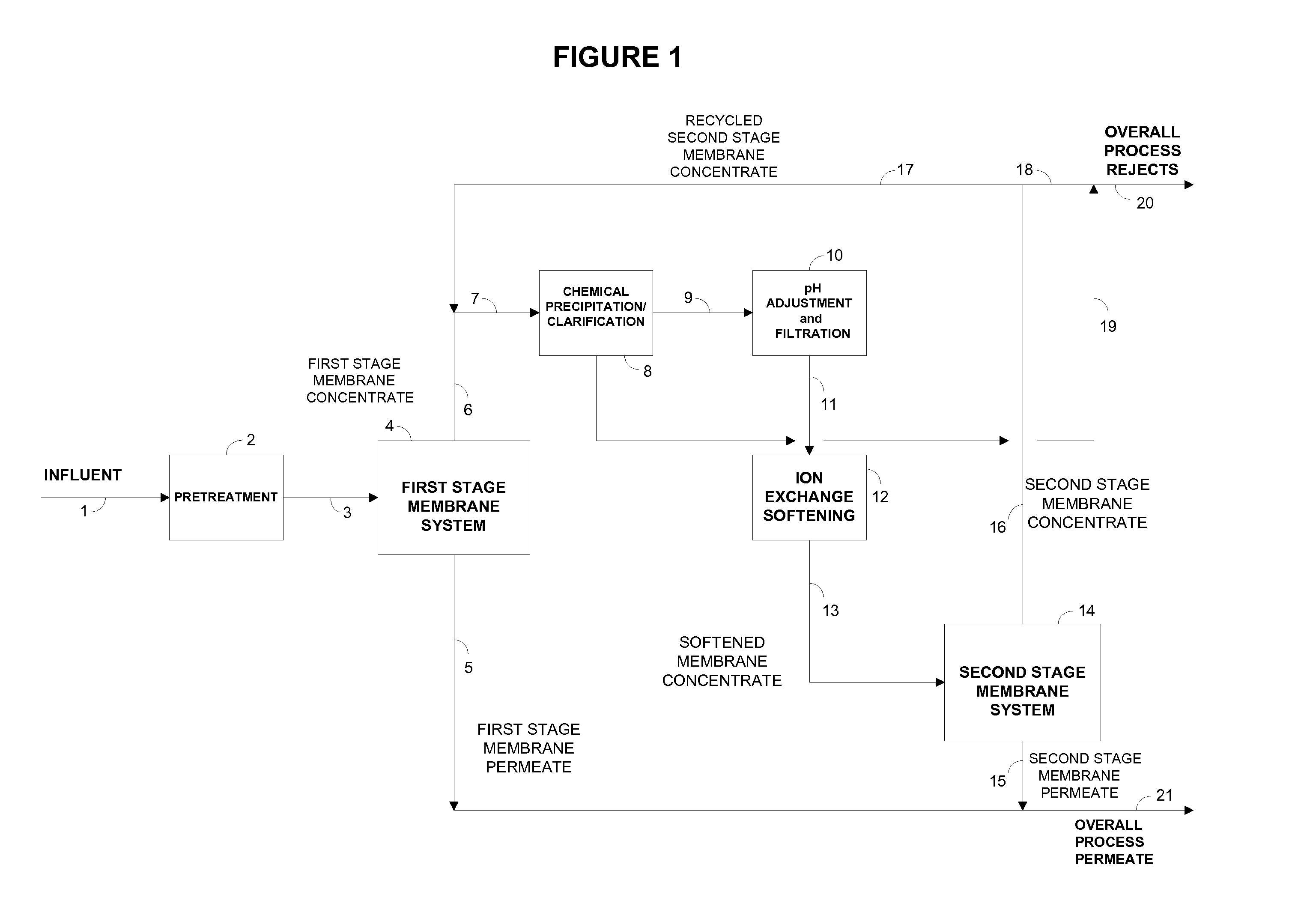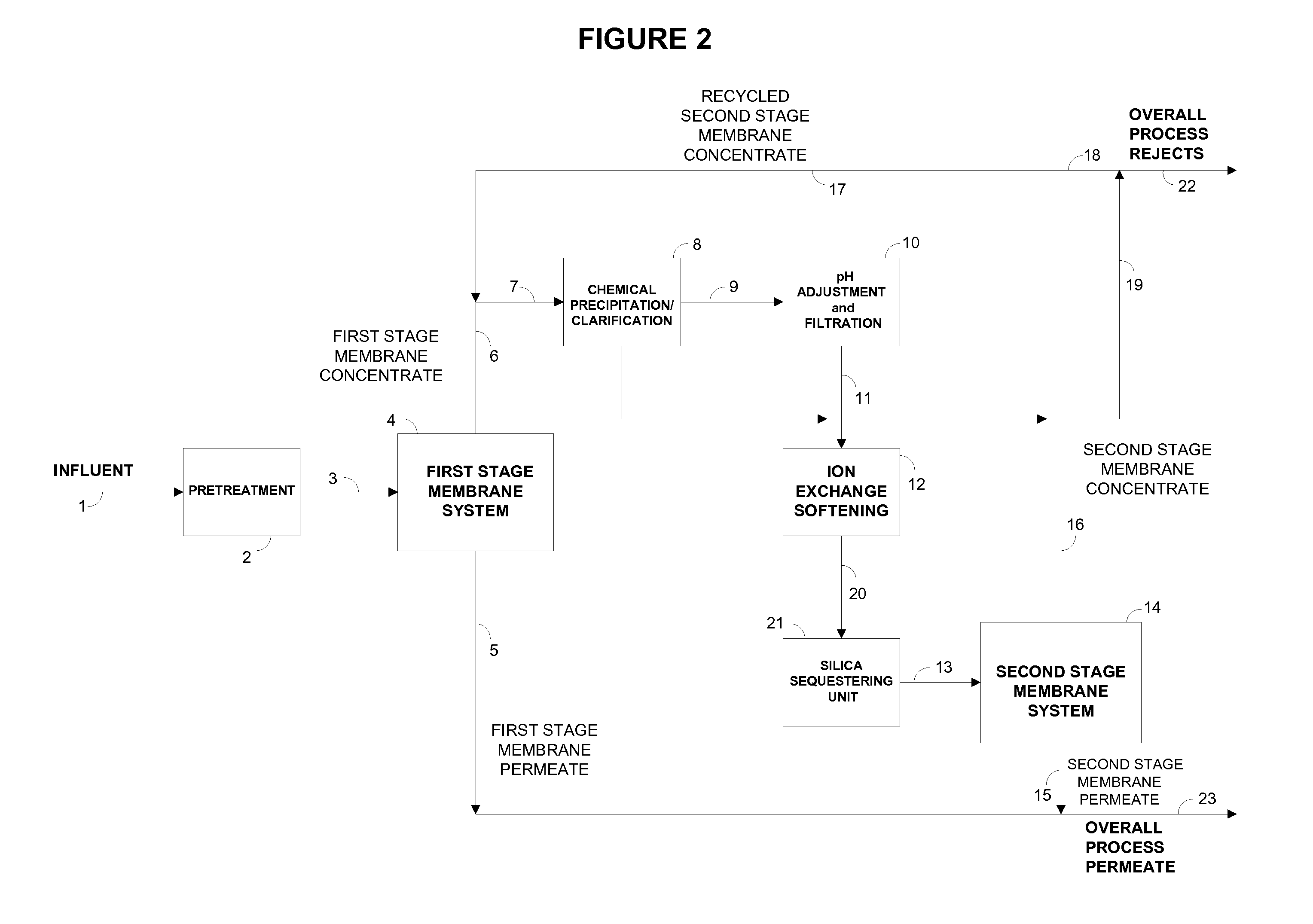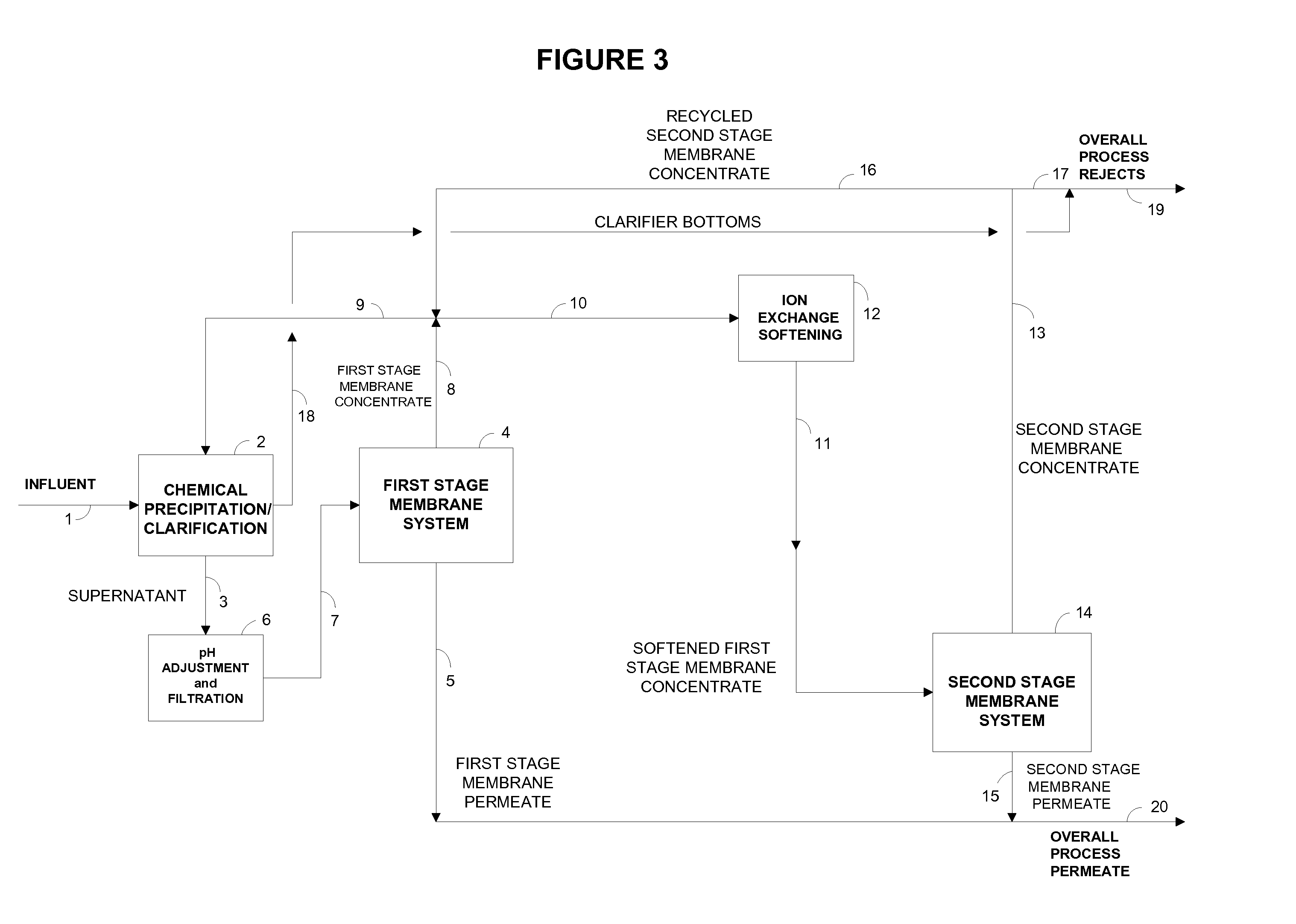Enhanced High Water Recovery Membrane Process
a high-water recovery and membrane technology, applied in the direction of membranes, separation processes, multi-stage water/sewage treatment, etc., can solve the problems of increasing the volume of waste sludge generated, increasing the operating and maintenance costs, and prior art processes have limitations
- Summary
- Abstract
- Description
- Claims
- Application Information
AI Technical Summary
Benefits of technology
Problems solved by technology
Method used
Image
Examples
Embodiment Construction
[0045]The present invention is intended to address limitations of prior art, including U.S. Pat. No. 6,113,797 and U.S. Pat. No. 6,461,514B1. U.S. Pat. No. 6,113,797 teaches using a 2-stage membrane process with post 2nd stage membrane concentrate softening that achieves very high purified water recoveries in the range 67% to 99.9%. In U.S. Pat. No. 6,113,797, the high TDS 2nd stage membrane concentrate containing most of the soluble and sparingly soluble inorganic ions is softened by chemical precipitation at high pH followed by clarification, filtration and pH reduction, and recycling to the low pressure side of the 2nd stage membrane system to achieve further recovery of purified water. Alternatively, if the silica concentration is not limiting, the 2nd stage membrane concentrate is softened simply by passage through a suitable ion exchange softening resin, followed by recycling to the low pressure side of said 2nd stage membrane system to achieve further purified water recovery....
PUM
| Property | Measurement | Unit |
|---|---|---|
| Fraction | aaaaa | aaaaa |
| Fraction | aaaaa | aaaaa |
| Fraction | aaaaa | aaaaa |
Abstract
Description
Claims
Application Information
 Login to View More
Login to View More - R&D
- Intellectual Property
- Life Sciences
- Materials
- Tech Scout
- Unparalleled Data Quality
- Higher Quality Content
- 60% Fewer Hallucinations
Browse by: Latest US Patents, China's latest patents, Technical Efficacy Thesaurus, Application Domain, Technology Topic, Popular Technical Reports.
© 2025 PatSnap. All rights reserved.Legal|Privacy policy|Modern Slavery Act Transparency Statement|Sitemap|About US| Contact US: help@patsnap.com



